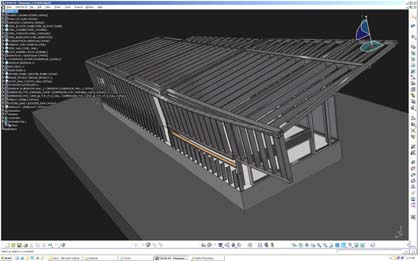Seconda Consegna: Subtle variations
cari ragazzi,
la lezione di ieri è terminata in modo brusco e quindi riepiloghiamo qui il tema
della prossima consegna, anche per chi non ha potuto essere presente.
Dear all,
the class yesterday finished quite roughly, so we give you here a written
summary of the next assigment, also to help people that were not there.
La lezione, dal titolo "Digital Tectonics", è disponibile in video e in Google Presentations,
trovate entrambe le cose nel post sulla lezione stessa. Si è parlato, in termini sintetici, della
simulazione tettonica in ambiente digitale, e lavorato poi sul campo usando le "famiglie nidificate"
(o meglio, "Nested Families") all'interno di Revit. E questo sarà il "campo" della prossima consegna!
The class, entitled "Digital Tectonics", is available in video and Google Presentations,
you can find both things in the post about the class. In few words, in the class we introduced
basics of tectonics simulation in the digital enviroment, and tested it through "nested families"
in Revit. And that will be the "environment" of next project!
La prossima consegna riguarda la progettazione e consegna sul sito, in forma
di "mini-tutorial", di un oggetto concepito come "Assembly tettonico", vale a dire
di un oggetto composto come montaggio di altri oggetti modellati e poi "nidificati"
all'interno della famiglia che al corso abbiamo definito "famiglia madre".
Next Deliverable is to design and post on the website the conception, modeling
and visualization process of an object conceived as "Tectonic Assembly". We
intend an object, no matter at which scale, that's made of the assembly of parts,
that are modeled as external Revit families (also called "child families") and then
loaded all into a family file, that simulated an assembly file (also called "mother family").
L'aspetto interessante, che ci aspettiamo di vedere, è quello di riflettere sulla seconda parte
della lezione, in cui, dopo aver introdotto la tettonica, abbiamo mostrato come in ambito digitale
ci siano strategie "sottili" per ridurre il numero di componenti variabili, fino a concepire elementi
"guida" (quelle che abbiamo definito "dime") che siano lavorati a controllo numerico per permettere
poi il montaggio di elementi che possono essere anche standard, o quantomeno semplici.
The interesting aspect, that we expect to see in your works, is tied to the second part of the class, where after
introducing tectonics, we showed "subtle" strategies, in the digital medium, used to limit the
number of variable components. We showed, in particular, elements that are milled, or cut, of bended with CNC
in order to allow the use of the rest of pieces as standard, or simply cut pieces. And help position them easily in
non-standard confgurations. Not everything needs to become entirely variable!
Insomma provare a lavorare a variazioni "sottili", ma non necessariamente,
l'obiettivo è comunque ottenere ora un assebmly tettonico. Sarà ognuno di voi e scegliere
e calibrare come lavorare in base al proptrio progetto, potete portare avanti il precedente,
semplificarlo, renderlo complesso, oppure se volete, cambiare progetto.
So we ask you to try go for "subtle" variations, but of course not necessarily.
it depends on projects. Just now you are a bit more "mature". But only you
know and can calibrate your design given the new possibilities acquired.
It can be an evolution, a new thing, a more complex evolution...
What is mandatory is that the new project (that can be an evolution of the first one)
has to be a tectonic assembly.
Non dimenticate di usare famiglie "face based": niente vola!
La consegna ha termine ultimo Mercoledì 19 ore 16, per permetterci le valutazioni.
Just don't forget to use "face based" families, as shown in the class.
Nothing flies in architecture!
Deadline is Wednesday, November 19th, 4 in the afternoon, so we have
time to evaluate the work (both).
NOTA / note:
TUTTI POSSONO FARE LA CONSEGNA; ANCHE CHI NON ABBIA FATTO LA PRIMA!
EVERYBODY CAN DO THE SECOND ASSIGNMENT AND RECOVER THE FIRST!
Siamo molto curiosi degli esiti,
Buon lavoro a tutti!
We are very curious of your projects, good work!!!!




Commenti
Irem Bahcelioglu
Sab, 15/11/2014 - 23:27
Collegamento permanente
The next project
Could you explain the project in English,please? What kind of things you expect and what should we do?
Thank you
Irem Bahcelioglu
StefanoConverso
Dom, 16/11/2014 - 12:49
Collegamento permanente
Of course!
Added to the main post, thanks for the request!